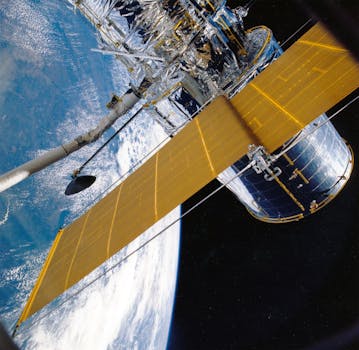From Geostationary to Low Earth Orbit: The Evolution of Satellite Telecommunications in 2023

From Geostationary to Low Earth Orbit: The Evolution of Satellite Telecommunications in 2023
From Geostationary to Low Earth Orbit: The Evolution of Satellite Telecommunications in 2023 has been a remarkable journey, with significant advancements in technology and a shift in the way satellite communications are used. The satellite telecommunications industry has come a long way since its inception, with the first commercial satellite, Intelsat 1, launched in 1965. Since then, the industry has experienced tremendous growth, with the launch of numerous satellites and the development of new technologies.
Satellite telecommunications have played a vital role in connecting remote and underserved communities, providing internet access, and enabling global communication. The industry has evolved over the years, with a shift from geostationary to low earth orbit (LEO) satellites. This shift has been driven by the need for faster, more reliable, and cost-effective communication services.
The Geostationary Orbit Era
Geostationary orbit (GEO) satellites have been the backbone of the satellite telecommunications industry for decades. These satellites are placed in a fixed position above the equator, at an altitude of approximately 36,000 kilometers, and remain stationary relative to a point on the Earth’s surface. GEO satellites have been used for a variety of applications, including television broadcasting, telecommunications, and weather forecasting.
However, GEO satellites have some limitations, including high latency, limited bandwidth, and high launch costs. The latency issue is particularly significant, as signals have to travel from the Earth’s surface to the satellite and back, resulting in a delay of around 250-300 milliseconds. This latency can be a major issue for applications that require real-time communication, such as video conferencing and online gaming.
The Rise of Low Earth Orbit Satellites
In recent years, there has been a significant shift towards LEO satellites, which are placed in an orbit at an altitude of around 160-2,000 kilometers. LEO satellites have several advantages over GEO satellites, including lower latency, higher bandwidth, and lower launch costs. The latency issue is significantly reduced, with signals taking only around 10-20 milliseconds to travel from the Earth’s surface to the satellite and back.
LEO satellites are also more suitable for applications that require high-speed data transfer, such as broadband internet and IoT connectivity. The lower altitude of LEO satellites also allows for the use of smaller, more efficient satellites, which can be launched at a lower cost. This has led to a proliferation of LEO satellite constellations, with companies such as SpaceX, OneWeb, and Amazon’s Kuiper Systems launching thousands of satellites into orbit.
Benefits of Low Earth Orbit Satellites
The shift towards LEO satellites has several benefits, including faster and more reliable communication services, lower latency, and higher bandwidth. LEO satellites are also more suitable for applications that require real-time communication, such as video conferencing and online gaming.
In addition, LEO satellites can provide broadband internet access to remote and underserved communities, helping to bridge the digital divide. The lower launch costs and faster deployment times of LEO satellites also make them more attractive to companies and organizations looking to establish a presence in space.
Conclusion
In conclusion, the evolution of satellite telecommunications from geostationary to low earth orbit has been a significant development in the industry. The shift towards LEO satellites has been driven by the need for faster, more reliable, and cost-effective communication services. As the industry continues to evolve, we can expect to see further advancements in technology and the development of new applications for satellite communications.




